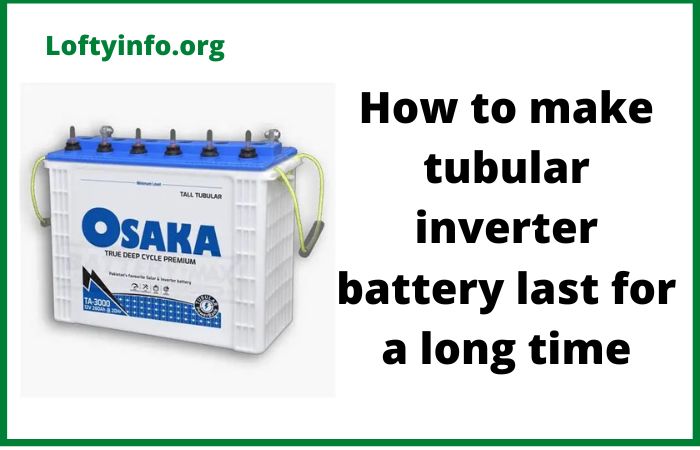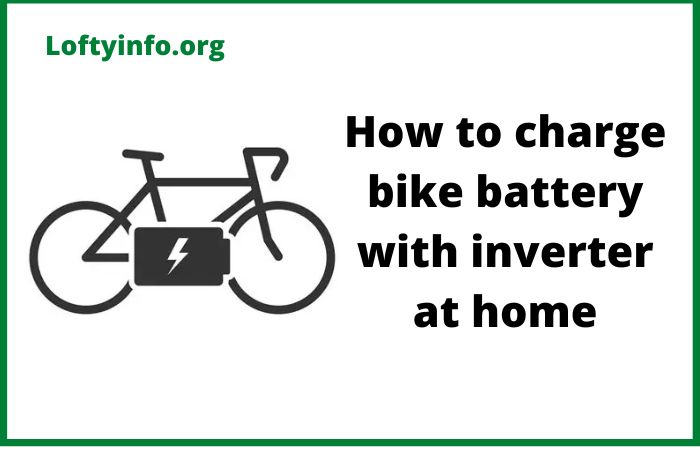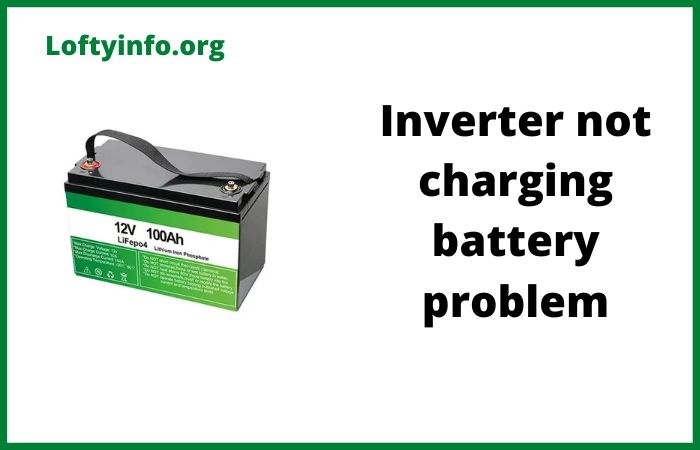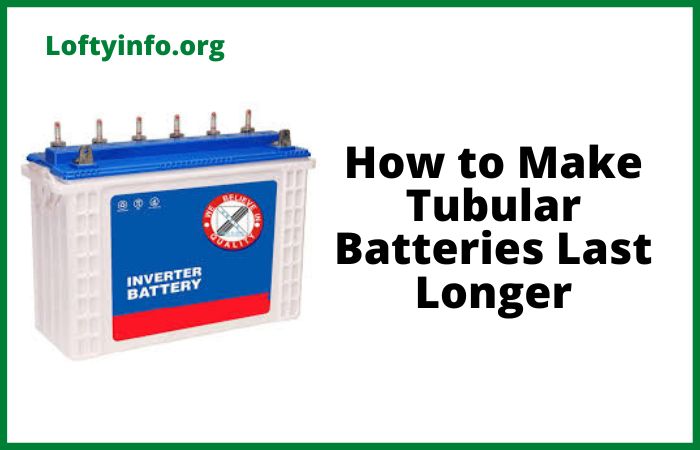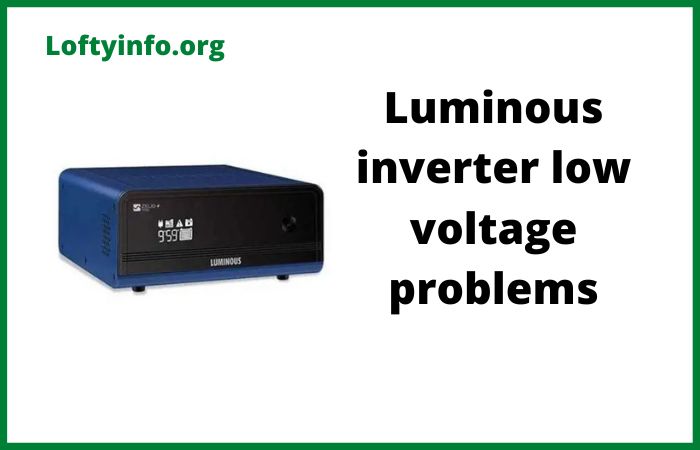How to Make Tubular Inverter Battery Last for a Long Time
Power cuts can disrupt your daily routine, making an inverter system essential for uninterrupted electricity supply.
At the heart of this system lies the tubular inverter battery, a robust power backup solution that keeps your home or office running smoothly during outages.
The longevity of these batteries depends largely on how well you maintain them.
While manufacturers typically promise a lifespan of 5 to 7 years, poor maintenance can drastically reduce this period, leading to premature replacement and unnecessary expenses.
Understanding how to make tubular inverter battery last for a long time isn’t just about saving money, it’s about ensuring reliable power backup when you need it most.
With proper care and attention, you can maximize your battery’s performance and extend its operational life well beyond average expectations.
Let’s explore the proven methods that will help you get the most out of your investment.
How to Make Tubular Inverter Battery Last for a Long Time
1) Maintain Proper Water Levels Consistently
Water maintenance stands as the single most critical factor in extending your tubular battery’s lifespan.
These batteries use distilled water as part of their electrolyte solution, which naturally depletes over time through evaporation and chemical reactions.
Checking water levels every month is essential, though you may need to inspect more frequently during hot weather or periods of heavy usage.
Always use distilled or demineralized water and never tap water which contains minerals and impurities that can damage the battery plates and reduce efficiency.
The water level should remain between the minimum and maximum indicators marked on the battery.
Overfilling can cause acid spillage during charging while underfilling exposes the plates to air, leading to sulfation and permanent damage.
When topping up, wait until the battery has cooled down after charging.
Hot batteries can cause water to overflow once it’s added. Use a funnel or battery water filler to avoid spillage and never add water if the battery level is already adequate.
This simple monthly routine can add years to your battery’s life.
2) Keep the Battery Clean and Corrosion-Free
Dirt, dust and corrosion are silent killers of battery performance.
The top surface of your tubular battery should remain clean and dry at all times.
Accumulated dust can create a conductive path between terminals, causing self-discharge and power loss even when the battery isn’t in use. Corrosion around terminals increases resistance, reducing charging efficiency and overall performance.
Clean the battery exterior monthly using a soft, dry cloth.
For stubborn dirt, use a cloth dampened with a mixture of baking soda and water, which neutralizes any acid residue.
Pay special attention to the terminals, if you notice white or greenish deposits, remove them carefully using a wire brush or sandpaper.
After cleaning, apply petroleum jelly or terminal grease to prevent future corrosion.
Ensure the battery sits on a stable, flat surface in a well-ventilated area.
The location should be away from direct sunlight and heat sources as excessive temperature accelerates water loss and degrades battery components.
Good ventilation prevents the buildup of hydrogen gas produced during charging, which is both a safety concern and can affect battery chemistry.
3) Charge Your Battery Correctly
Proper charging practices significantly impact how long your tubular inverter battery will last.
Avoid letting your battery discharge completely on a regular basis deep discharges stress the battery and reduce its cycle life.
Ideally, recharge the battery before it drops below 50% capacity.
Modern inverters often have settings that prevent over-discharge, so ensure these features are enabled.
Equally important is avoiding overcharging.
Most quality inverters have automatic charging cutoffs but if yours doesn’t, monitor charging times.
Overcharging causes excessive water loss through electrolysis and generates heat that damages the battery plates.
Your inverter’s charging voltage should match the battery’s specifications typically around 13.8 to 14.4 volts for a 12V tubular battery.
During extended power availability periods when the inverter isn’t needed, the battery should still receive a refresh charge every month.
This prevents sulfation, a condition where lead sulfate crystals harden on the plates, reducing capacity and performance.
If you plan to store the battery unused for extended periods, charge it fully before storage and top it up every two months.
4) Balance Your Load Appropriately
Your tubular battery has a specific capacity measured in ampere-hours (Ah).
Overloading it by connecting appliances that collectively exceed its capacity causes excessive discharge rates, generating heat and stress that shorten battery life.
Calculate your load requirements carefully and ensure they don’t exceed 80% of your battery’s rated capacity for optimal performance.
Running heavy appliances like air conditioners, water heaters or washing machines directly on inverter power should be avoided unless your system is specifically designed for such loads.
These devices draw significant current that can drain your battery rapidly and create thermal stress.
Instead, prioritize essential lighting, fans, computers and communication devices during power outages.
If you frequently find your battery draining too quickly, consider adding additional batteries to your system rather than constantly deep-discharging a single unit.
Multiple batteries in parallel increase your total capacity, allowing each battery to work under less stress and last considerably longer.
5) Conduct Regular Inspections and Testing
Proactive maintenance through regular inspections can identify potential problems before they become serious.
Every three months, check all cable connections for tightness.
Loose connections create resistance, generate heat and reduce charging efficiency.
Ensure battery terminals are firmly attached and free from movement.
Monitor your battery’s performance by observing backup time.
If you notice a significant decrease in how long your battery powers your appliances, it may indicate capacity loss, sulfation or other issues.
Many modern inverters have built-in battery health indicators, pay attention to these warnings and act promptly.
Inspect the battery casing for any cracks, bulges, or leaks.
Physical damage can compromise safety and performance.
Also check the electrolyte level indicator if your battery has one, uneven levels across cells might indicate a problem with specific cells.
The specific gravity of the electrolyte should be tested annually using a hydrometer to assess the battery’s state of charge and health.
6) Ensure Adequate Ventilation and Temperature Control
Temperature dramatically affects battery performance and longevity.
Tubular batteries operate best between 20-25°C (68-77°F).
For every 10°C increase above 25°C, battery life can decrease by up to 50%.
Extremely cold temperatures reduce available capacity, though they don’t cause permanent damage like heat does.
Install your battery in a location with good air circulation.
During charging, batteries release hydrogen gas and generate heat both need to be dissipated safely.
A dedicated battery room or cabinet with ventilation openings at both top and bottom creates natural convection that keeps temperatures manageable and prevents gas accumulation.
Avoid placing batteries in direct sunlight or near heat-generating equipment like generators or kitchen appliances.
If you live in a particularly hot climate, consider using a temperature-controlled environment or at least a shaded, well-ventilated space.
Some users install small exhaust fans in battery enclosures to improve air circulation during charging cycles.
7) Use a Compatible and Quality Inverter
Your inverter and battery must work in harmony for optimal performance.
An incompatible inverter may charge your battery incorrectly, either undercharging (leading to sulfation) or overcharging (causing water loss and plate damage).
Always pair your tubular battery with an inverter specifically designed for tubular technology, with appropriate charging algorithms.
Quality inverters include features like temperature compensation that adjusts charging voltage based on ambient temperature, multi-stage charging that optimizes the charging process, and low battery alarms that prevent excessive discharge.
These features protect your battery from common causes of premature failure.
Cheap, low-quality inverters may save money initially but often lack proper protection circuits and precision charging control.
Investing in a reputable inverter brand pays dividends through extended battery life and reliable performance.
Ensure your inverter’s capacity matches your battery bank, an oversized inverter is better than an undersized one.
Conclusion
Learning how to make tubular inverter battery last for a long time requires commitment to regular maintenance and proper usage practices.
By maintaining correct water levels, keeping the battery clean, following proper charging protocols, balancing your electrical load, conducting regular inspections, ensuring adequate ventilation and using compatible equipment, you can extend your battery’s lifespan significantly beyond its expected duration.
These practices don’t require specialized technical knowledge or expensive tools, just consistency and attention to detail.
A tubular inverter battery represents a significant investment in your power backup infrastructure and treating it with care ensures you get maximum value from that investment.
With proper maintenance, your battery will reliably serve you for many years, providing peace of mind and uninterrupted power whenever you need it most.
Benefits of having a large solar array
How to charge inverter battery at home
What to do when Inverter shows low battery too quickly
Best small inverter with battery for shop
Best small inverters with battery for home
How to make solar generators last longer
How to configure inverter correctly before use after installation
How to make tubular batteries last longer
Critical mistakes to avoid when connecting solar panels in series
